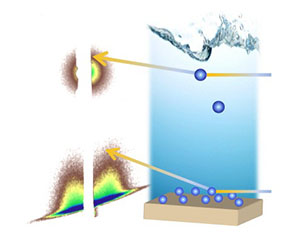Sunscreen contains nanoparticles to protect our skin by reflecting hazardous ultraviolet radiation from the sun. But what happens to those nanoparticles when you wash the sunscreen away?

Young-Shin Jun, PhD, has received a three-year, $382,000 grant from the National Science Foundation to determine the physical and chemical evolution of environmental and engineered nanoparticles in natural and engineered aquatic systems, such as wastewater treatment plants. But instead of starting at the end of the life cycle of nanoparticles, she’s starting at the very beginning — the early stages of nanoparticle formation.
The goal is to determine whether nanoparticle transformation in wastewater treatment will introduce more adverse effects on the quality of the effluent water from wastewater treatment systems, how these nanoparticles can be removed from the system or how they can be further used to better remove toxic contaminants.
“We have spent so much time looking at how to create a nanoparticle, and we didn’t think much about their toxicity or potential hazardous problems,” says Jun, assistant professor of energy, environmental & chemical engineering at Washington University in St. Louis. “If we understand nanoparticle formation in these environments, we can better fine-tune our design of nanoparticles to minimize any adverse effects in the environment. If we do understand well, we can use these nanoparticles in engineering to potentially alleviate climate change.”
The team also will look at nanoparticles released into the environment that react with rare earth elements and toxic compounds.
“This will help us understand the impact of the transformation of exotic engineered nanoparticles in natural and engineered aqueous systems, which can potentially create hybrid nanoparticles that we don’t yet understand well,” Jun says.
Because nanoparticles are so small — especially when they are just forming — only highly sensitive and in situ imaging devices and methods, such as electron microscopies, X-ray scattering, infrared spectroscopy and nanoscale mass spectrometry will allow researchers to see them.
Jun’s team will be the first to use novel techniques to measure the nanoparticle sizes and mineral phases while they are still growing in water.
“These nanoparticles are very fragile, and once you remove them from water, they dry out and change shape,” she says. “Since we are studying wastewater and environmental systems, we want to look at the particles in water so we can see what’s happening when they are in that environment and stop the reaction when we see it happening.”
Jun’s lab also has special tools that will allow them to see the nanoparticles as they are growing.
“Our research group is uniquely positioned to do this because we will use grazing incidence small X-ray scattering and atomic force microscopy, which will provide real-time information about the kinetics and mechanisms of nanoparticle nucleation and growth,” she says. “These tools are very sensitive, so we can even catch the moment when the particles first start to form.”
For broader impact, Jun and her research team will conduct education for and outreach to students from middle school through graduate school, particularly encouraging groups traditionally underrepresented in the science, technology, engineering and mathematics (STEM) fields.
They will develop a group of educational kits about water quality in collaboration with teachers from University City High School, Brittany Woods Middle School and the university’s Science Outreach Office.